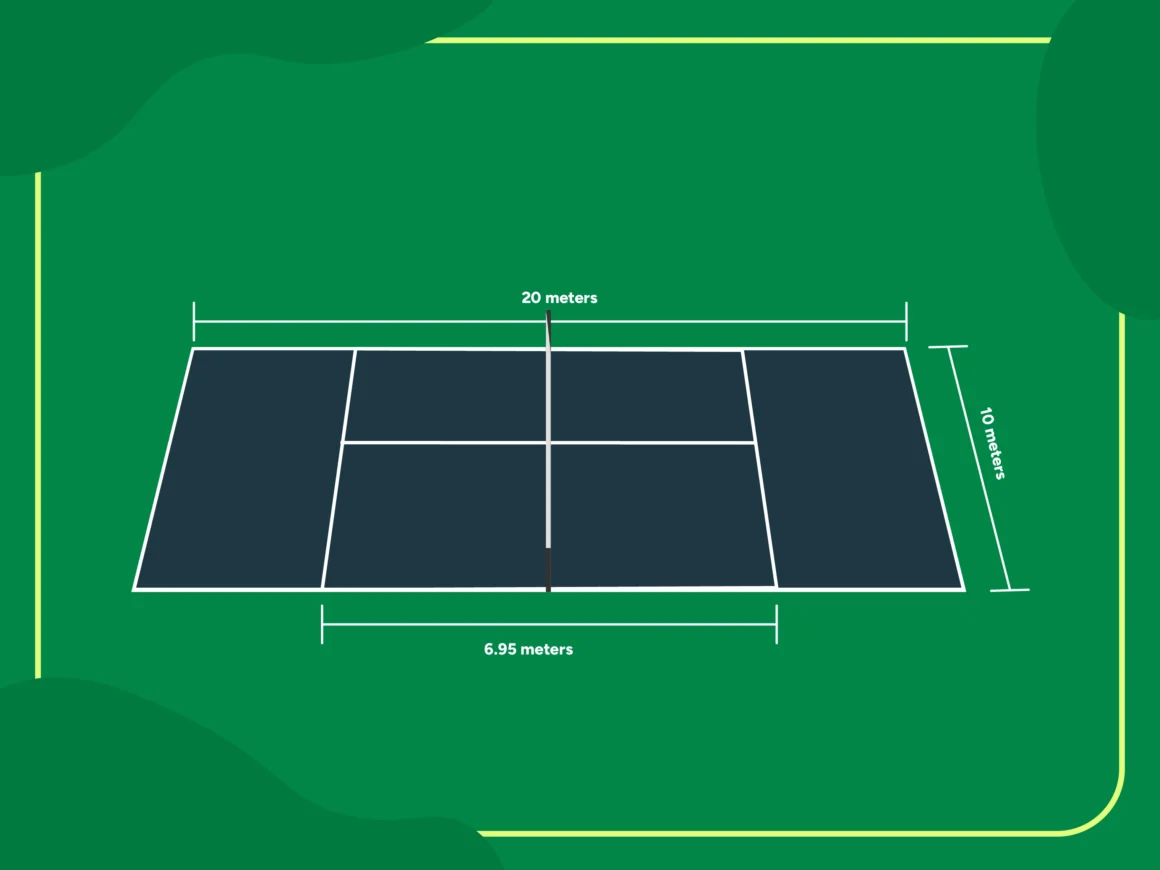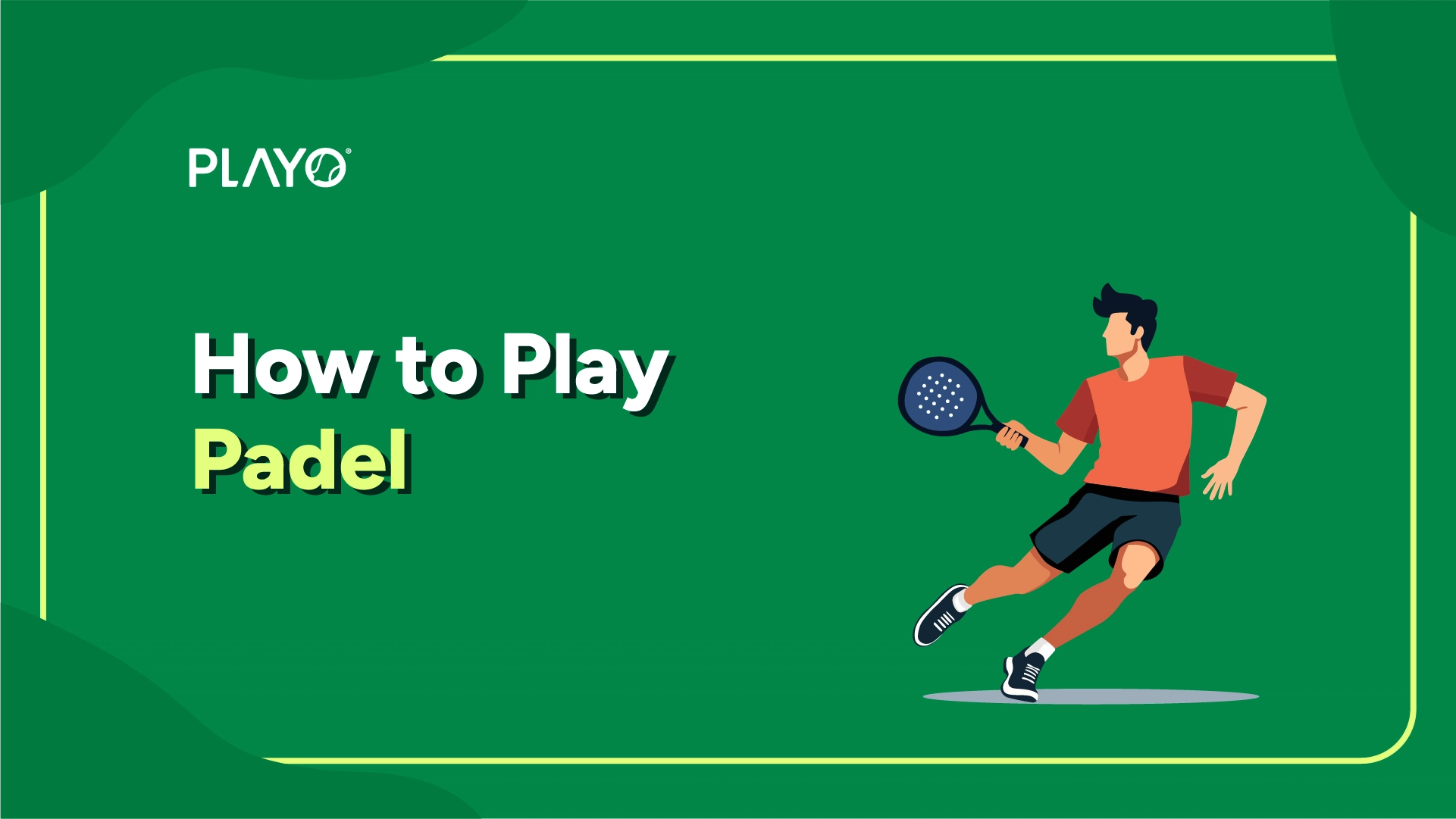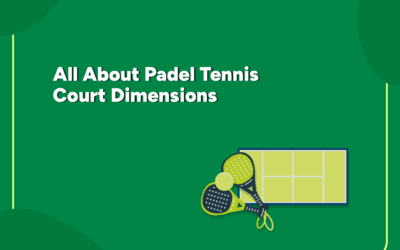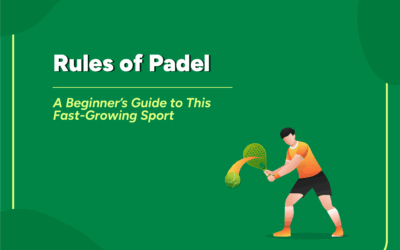Padel is a doubles-based racket sport played on an enclosed court with glass walls and metal fencing. It combines elements of tennis and squash but follows a distinct set of rules, including an underarm serve, a single-bounce rally system, and the strategic use of walls to keep the ball in play. The game uses solid, stringless rackets and lower-pressure balls, making rallies more controlled and longer than in tennis.
To master how to play padel, you need to understand the serving rules, the scoring system, and how to use the glass walls strategically to keep rallies going. Together, these fundamentals help you build a solid playing base.
What Is Padel?
Padel is a racket sport played in pairs on an enclosed court surrounded by glass walls and metal mesh. Unlike tennis, players use solid rackets without strings and serve underarm. The court’s walls allow continuous play even after the ball bounces, making padel a dynamic and tactical sport.
Originating in Mexico in the late 1960s, padel quickly spread to Spain and Argentina, where it became a major recreational and competitive activity. Today, padel’s appeal lies in its accessibility. Games are short, easy to learn, and fun for players of all fitness levels.
Unlike tennis or squash, padel is played exclusively as doubles, promoting communication and teamwork. Rallies often last longer than in tennis, and players can use the glass wall’s rebound to return challenging shots, enhancing strategy and skill.
Dimensions of a Padel Court

A standard padel court measures 20 meters long and 10 meters wide, divided by a central net. These padel tennis court dimensions include a net height of 88 cm at the centre and slightly higher at the posts. The court includes two service boxes on each side, marked by a centre line and service line.
Glass walls surround the back of the court and part of the sides, while doors on both sides allow players to chase balls that bounce out of the court during rallies. This unique layout enables exciting “out-of-court” returns, adding flair to advanced matches.
Read More: Padel vs Pickleball
Main Zones of a Padel Court
- Service area (where services begin)
- Playable area (the main rally zone)
- Out-of-bounds (when the ball leaves play or hits walls without bouncing first)
Basic Rules of Padel
Padel rules are simple to grasp for beginners. As per the rules of padel, points begin with an underarm serve and continue through strategic rallies involving the glass walls. Like tennis, the scoring system counts points as 15, 30, 40, and 40.
How to Serve in Padel
- The server must stand behind the service line.
- The ball must first bounce once before being struck underarm.
- The serve must be below waist height and travel diagonally into the opposite service box.
- If the serve bounces and hits the back wall, it is valid; if it hits the cage, it’s out.
- Modern professional padel follows a two-serve system, similar to tennis.
- If the ball clips the net and still lands in the correct service box, it is considered a “let,” and the serve can be replayed.
How a Padel Rally Works

Once the serve is in play, both teams focus on keeping the ball alive using smart placement and strategic use of the court’s walls. The ball is allowed to bounce once before being returned, and rallies often become more dynamic as players use angles and rebounds to extend play.
A shot is considered valid only if the ball first bounces within the court before touching a wall or the metal cage. Players can also let the ball rebound off their own back glass before striking it to regain control of the rally. However, directly hitting the cage on your own side results in a fault and immediately ends the point.
How a Point Ends in Padel
- If the ball bounces twice on one side, that team loses the point.
- If the ball hits a wall or cage before bouncing, it’s out.
- If the ball lands outside the court, the point is over.
- Players can chase the ball through the side door after a legal bounce to continue play. This is a unique and thrilling part of padel.
How to Score in Padel
Padel uses the same scoring system as tennis. Serving in padel has a few specific rules that make the game easy to follow and consistent for all players. Understanding these basics helps you start each point correctly and avoid common faults.
| Serve Rule | Explanation |
| Ball bounce | Must bounce once before serve |
| Serve height | Underarm, below the waist |
| Direction | Must go diagonally to the opposite service box |
| Back wall | Legal after correct bounce |
| Cage on serve | Fault |
| Number of serves | 1 (professional level: 2 serves) |
| Net clip (let) | Replay allowed |
Tips to Play Padel Better
- To improve your padel performance, combine positional awareness with teamwork and use the walls effectively.
- Communicate constantly with your partner. Padel doubles rely on clear calls.
- Control the net position. Move forward during rallies to dominate play.
- Use lobs and angled shots to force your opponents back.
- Practice short rallies and volleys for quick reflexes.
- Learn wall rebounds. Hitting the ball after a glass bounce can turn defence into attack.
- Stay balanced. Avoid over-swinging or trying tennis-style power serves.
Common Beginner Mistakes to Avoid in Padel
- Serving errors: Forgetting to bounce the ball before serving or hitting too high.
- Cage contact: Hitting the cage directly from serve or rally play.
- Poor positioning: Standing too deep gives opponents control at the net.
- Lack of communication: Doubles require constant coordination to avoid collisions.
- Missing the wall rebound: Overestimating where the ball will bounce leads to unforced errors.
Equipment and Gears for Padel
Having the right equipment ensures comfort and performance on court.
- Padel Racket: Shorter and thicker than a tennis racket, made from composite materials with holes for aerodynamic control.
- Padel Balls: Similar size to tennis balls but with lower pressure for a slower bounce.
- Footwear: Non-marking court shoes provide grip on artificial turf padel courts.
- Clothing: Breathable sportswear, such as moisture-wicking shirts and shorts, enhances movement.
- Accessories: Optional wristbands, gloves, or grip tape can improve comfort during longer matches.
Conclusion
Learning how to play padel is easy, engaging, and highly social. By mastering the underarm serve, understanding basic wall rules, and practising teamwork, anyone can enjoy this exciting sport. The game’s mix of quick reactions and clever positioning makes it suitable for all ages and fitness levels. Grab a racket, invite a partner, and hit your local padel court. It’s the perfect combination of fitness and fun.
Frequently Asked Questions
Pickleball uses solid paddles and a plastic ball on an open court, while padel is enclosed with glass walls, allowing bounce play.
Always let the ball bounce before returning it when it comes off your wall; hitting before the bounce is out.
Rule 6 typically refers to service rules. Serve underarm, after one bounce, and below waist height.
In padel, only one bounce is allowed before hitting the ball.
A solid, perforated padel racket made from carbon or fibreglass with a short handle.
At 40–40, or “deuce,” a team must win two consecutive points (advantage and game) to secure the game.
Yes, padel and padel tennis refer to the same sport. “Padel tennis” is an informal term some people use for clarity, but the official name is simply padel.




0 Comments